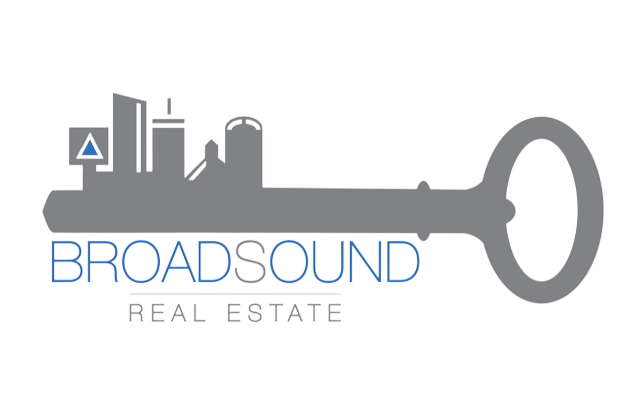You’re probably wondering how to buy a house but have a million doubts about where to start or what exactly you need to do it successfully. No worries, that’s okay; many of us have been there.
Purchasing a home may be both daunting and thrilling for first-time home buyers. You are in the right place to solve your doubts.
In this post, we’ll go over all the essential steps on how to buy a house so you’ll know exactly what to expect and how to get ready.
Out of all the steps on how to buy a house, the main thing is your income.
The money destined to buy a house and other housing costs should not exceed more than 30% of your gross monthly income.
Depending on your situation, those costs include principal, interest, taxes, insurance, and association dues.
Remember: Your income will determine how much money financial institutions can lend you to buy a house.
To get the video version of this article, click here.
How to buy a house [Step by Step]
-
Step 1: Check Your Credit Score
-
Step 2: Get Pre-Approval for a Mortgage
-
Step 3: Find a Real Estate Agent
-
Step 4: Begin The House Hunting
-
Step 5: Make an Offer on a House
-
Step 6: Get a Home Inspection
-
Step 7: Get a Home Appraisal
-
Step 8: Close on Your New Home
Step 1: Check Your Credit Score
It’s a common mistake to go and look for houses before getting a credit score check. You want to ensure you’re in a position to purchase a home before you even start hunting for your dream house with that dream backyard.
Therefore, before moving on to any other step: check your credit score and review your finances.
Your credit will determine whether you qualify for a mortgage or not and in what terms you can make the loan. They will give you a lower interest rate if your credit is higher. However, if your credit is lower, they will provide you with a higher interest rate.
A minimum score of 580 is what you need to make the minimum down payment of 3.5%.
If your credit isn’t optimal to buy a house, check out our article where we cover «How to buy a house with bad credit in Massachusetts.»
Step 2: Find a Real Estate Agent that Knows the Market You’re Interested in
Picking a real estate agent is the most important part of the process. Finding the right real estate agent is the foundation for the success of your transaction.
Hint: Do not pick a salesman. Pick someone who knows what they are doing and, most importantly, someone who cares about you!
When talking to an experienced real estate agent before getting pre-approved, you might save yourself a ton of money and headaches!
Avoid unnecessary rate shopping and credit checks. An experienced real estate agent knows the market and knows who has the best loan products.
At Real Estate Juan C, our job is to give you the peace of mind you need to navigate this process seamlessly. Do not be afraid to talk to us a year before the purchase. We’ll help you find the right lender for you and your specific situation and set up a plan to start saving for your down payment and closing costs.
When receiving a mortgage and purchasing a home is where the real fun begins!
Your agent will watch out for your best interests by locating properties that suit your specifications, arranging showings, assisting with creating offers, and negotiating on your behalf.
Real estate agents are experts in the local market and can advise you throughout the whole process. They have seen hundreds or even thousands of properties, and they can guide your search to lessen the length and stress of the home buying process.
Consider working with Real Estate Juan C in the journey of getting your dream house. We’ll help you from step one until you get your dream house.
Step 3: Get Pre-Approval for a Mortgage
After checking your credit score and speaking to a real estate agent, the next step is to get pre-approved for a loan. This is essential because most sellers only accept offers from buyers who have their finances in a row which in most cases means being pre-approved for a mortgage.
Some lenders specialize in mortgages, typically a better option than conventional banks. Banks specializing in mortgages tend to lend more money quickly than conventional banks and offer better products.
By getting pre-approved, you will know how much money you have available to buy a house and narrow your search. For example, if you’re pre-approved for a $500,000 loan, there is no point in searching for homes that cost $700,000.
We recommend you seek your pre-approval six months before your anticipated move to put you in a better position. Purchasing a home is a process, and it takes time!
[Related Article: How to Increase the Mortgage Pre-Approval Amount?]
Step 4: Begin The House Hunting
At this point, you are already working with a real estate agent, and you’re pre-approved. Therefore, you know your budget and can determine your top priorities.
Those priorities include the house location, type of property (single family, multi family, condo), number of bedrooms and bathrooms, access to public transportation or highways, backyard, and so on.
We recommend you make a list ranking those factors from the most important to you to the least important.
Check the houses currently for sale here, or call us to find out about the off-market properties.
Step 5: Make an Offer on a House
After you find the house you like that fits your needs, it’s time to make an offer officially.
You should write an offer letter (your real estate agent can assist you with this). The letter includes your name, current address, the price you’re willing to pay, and even the deadline for the seller to get back to you after receiving the offer.
With this letter, you have to make a deposit. In Massachusetts, the deposit is usually $1,000 to ensure the seller won’t show the house to anyone else.
From there, you have seven days to perform an inspection, and then there will be a second deposit of 2% of the purchase price.
At this point, the seller can provide one of these responses:
- Accepting the offer
- Rejecting the offer
- Giving you a counteroffer
Step 6: Get a Home Inspection
During this step, an inspector will analyze the home to look for issues in the electrical systems, roofing, appliances, etc.
If there’s a problem with the house, ask the seller to correct it before closing or negotiating the offer.
You may want to reconsider the offer if there are major issues with the house. Significant problems include cracks in the foundation, for example.
Step 7: Get a Home Appraisal
A home appraisal is an evaluation that provides the current worth of the home you wish to purchase (the actual house value).
Before you use a mortgage loan to purchase a house, you must have an appraisal.
Lenders cannot lend more money than a house is worth. Thus, they need evaluations.
If the appraisal comes in below the purchase price, you’ll need to negotiate the price or come up with the difference, which is one of the many reasons having a mortgage contingency is in your best interest.
Step 8: Close on Your New Home
Congratulations! You’ve reached the last step in the process of how to buy a house.
Be careful to read your Closing Disclosure when it’s the time since it will contain information on the terms, final closing expenses, and any other fees or charges associated with your loan.
At least three days before the closing, your lender will email you the disclosure.
The seller will hand over the property title to you at the closing.
You’ll need to sign legal documents and pay closing costs during closing.
The Bottom Line: You’re now prepared for the process of how to buy a house.
Being a first-time home buyer might be frightening, but it doesn’t have to be if you have the right information and tools.
You may discover how the home purchasing process works by following the steps in this article and working with a reputable real estate agent, making buying a property more doable.
If you’re ready to start this process, reach out to us or call us at (617) 729-2967.
Are you still wondering how to buy a house? Watch this FREE training on how to buy a house like an expert. See you there!















![eBook How to Increase Home Value [7 Simple Ways]](https://realestatejuanc.com/wp-content/uploads/2022/03/FORMAS-WAYS-TO-INCREASE-YOUR-HOME-VALUE.png)